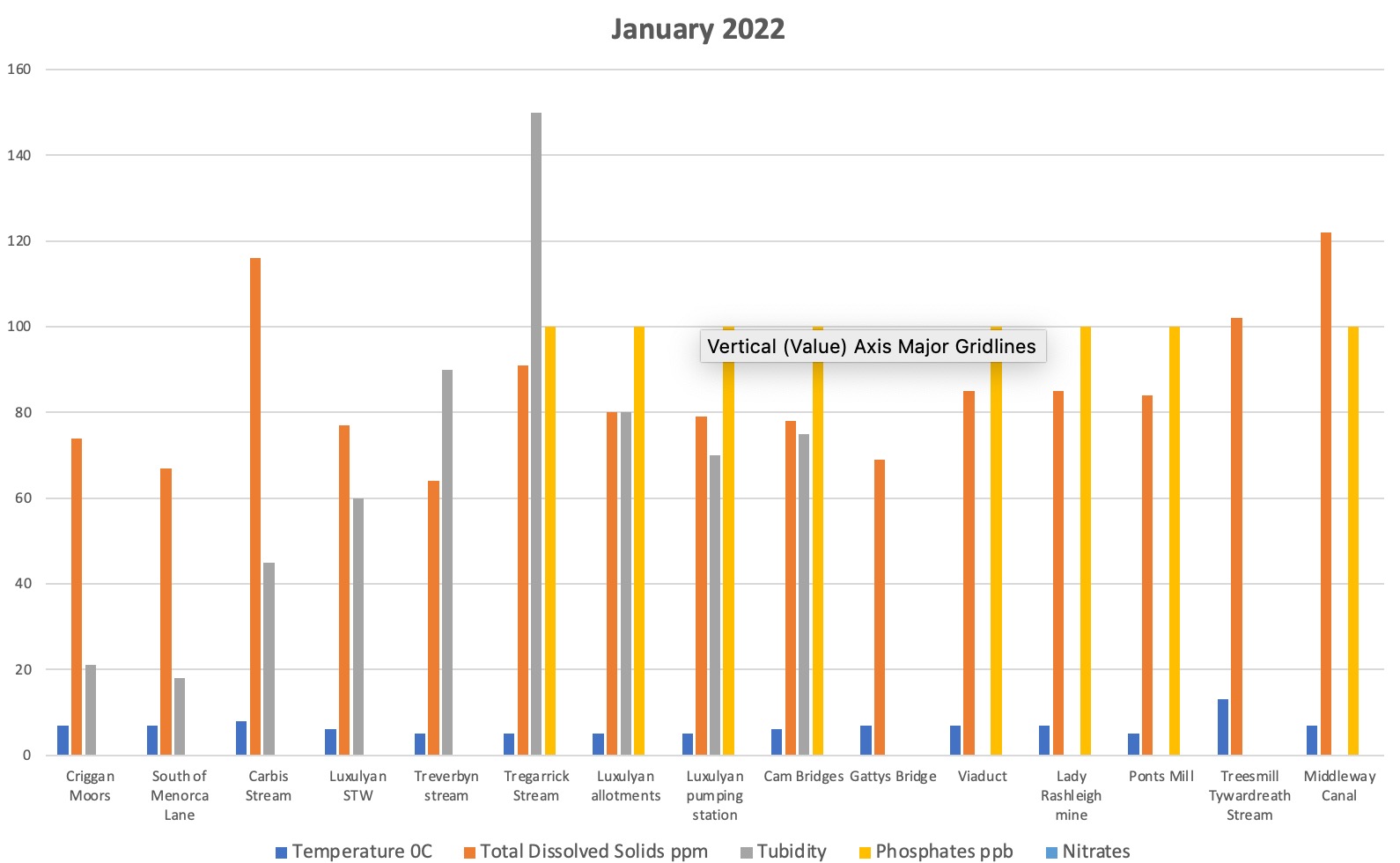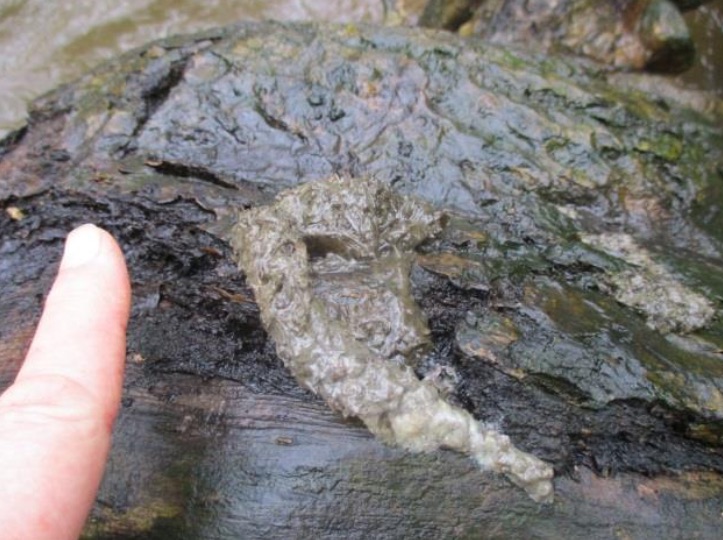A new year and a new look to results
No snow but plenty of rain!
Whilst we have been trying to track down the source of phosphate contamination, many more sample sites have been monitored but not published so that reporting would appear consistent over the year. Now that monitoring is consistent at 15 sites along the length of the Par the new year is the perfect opportunity to include these in the results summary. New sites, particularly upstream of the Valley, also show differing turbidity values (measure of water clarity) so these are now included too.

KEY POINTS FROM WRT CSI MONITORING IN JANUARY 2022
-
River levels were high and the flow was fast at most points.
-
Phosphate readings were very low, with none exceeding 100 ppb.
-
Turbidity was very high in many places.
-
China clay in the Carbis stream is a concern.
DISCUSSION
-
Phosphates did not exceed 100 PPB at any of our monitoring points. This may be a result of the dilution caused by heavy rainfall and high river levels. Environment Agency investigations have suggested the source of high phosphate levels is the SWW sewage treatment works at Luxulyan and that there is currently no legal requirement to limit phosphate levels in any discharges into the river. Should high levels be recorded in future, a case could be made to ask for limits.
-
Turbidity was high in various places, probably reflecting the conditions on 8th January when the river was high and flowing very fast.
-
The presence of what appears to be china clay in the Carbis Stream justifies investigation. It seems that Imerys has permits to discharge into other local rivers and this may be the case here.
Wildlife Monitoring
 Fresh otter spraint
Fresh otter spraint
Otters, dippers and herons continue to be present in the Luxulyan Valley section of the Par River
Next month some members of the group will be undertaking riverfly monitoring all thanks to Nick Taylor and Jeremy Roberts of the Three Bays Wildlife group for providing a refresher training on riverfly monitoring. Watch this space!
With usual thanks to Roger Smith for compiling our reports from which this information is taken.

